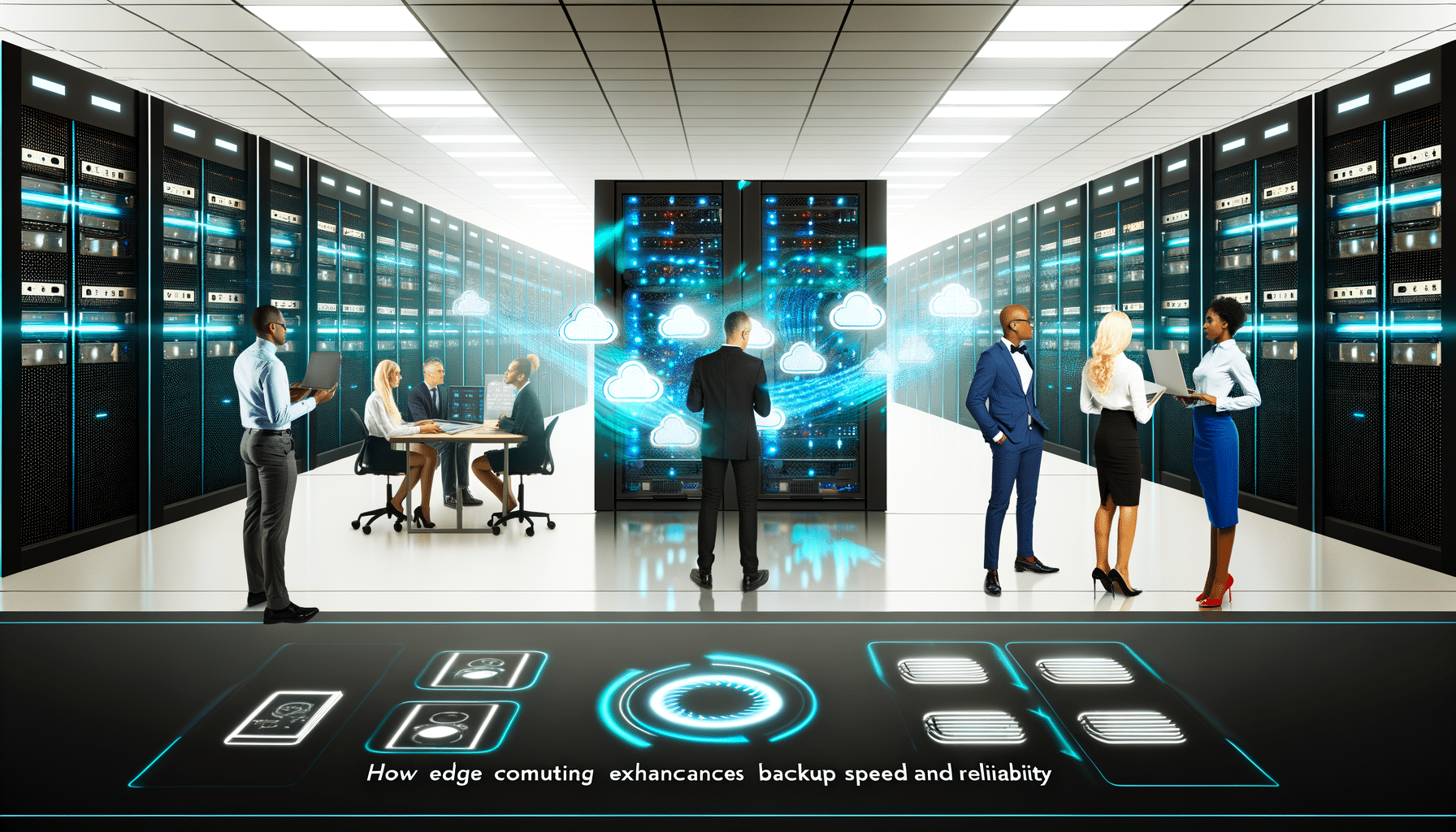- Edge Innovations
- September 5, 2023
How Edge Computing Enhances Backup Speed and Reliability

In the realm of data management, speed and reliability are no longer luxuries but necessities. As businesses and organizations face growing data volumes and increasing reliance on digital operations, ensuring quick and dependable backups has become crucial. This is where edge computing steps in, transforming how backups are executed and managed across the board.
Understanding Edge Computing in the Backup Landscape
Edge computing is a groundbreaking technology that processes data closer to its source rather than relying on a centralized data center. By distributing computational processes to the “edge” of the network, it enhances the speed and efficiency of data management tasks, including backups. Imagine having the ability to swiftly back up data from remote locations without any latency or bandwidth constraints. That is the promise of edge computing.
Boosting Backup Speed with Edge Computing
For IT managers and data custodians, backup speed is a critical consideration. After all, the longer it takes to back up data, the longer an organization remains vulnerable to potential data loss. Edge computing mitigates these concerns by reducing the distance data must travel, leading to several noteworthy advancements:
- Reduced Latency: By processing data locally, edge computing drastically lowers latency, ensuring backups can be initiated and completed more swiftly.
- Efficient Bandwidth Utilization: As data processing occurs nearer to its source, the strain on central network links is alleviated, allowing for smoother data transfer and quicker backup cycles.
- Distributed Processing: With the capacity to handle backups at multiple distributed locations simultaneously, edge computing prevents bottlenecks that often plague centralized systems.
Enhancing Backup Reliability
While speed is vital, reliability is equally, if not more, important. Downtime, technical failures, or catastrophic data loss events require businesses to depend heavily on their backups. Here’s how edge computing strengthens overall backup reliability:
- Localized Processing: By managing data processing locally, edge infrastructure ensures less exposure to network outages and central server failures.
- Redundant Systems: Backup processes implemented across various edge nodes offer redundancy, making it more robust against failures.
- Real-Time Monitoring and Recovery: Edge computing enables real-time monitoring of backup operations, allowing immediate corrective actions in case of discrepancies.
With RecordsKeeper.AI, we aim to provide top-tier edge computing solutions that revolutionize how organizations handle their backups, ensuring data is safe, secure, and readily available when needed the most.
Embracing the Edge for Future-Proof Data Management
As technology continues to evolve, the trend towards decentralization, edge computing, and faster data processing is just beginning. By integrating edge computing into backup strategies, organizations can transform record management from a cumbersome obligation into an efficient and effective strategic advantage.
Considering the technological benefits of edge computing in speeding up and securing backups, it is arguably essential for businesses and enterprises to embrace its potential. In the ongoing journey of digital transformation, those who seamlessly blend advanced technological solutions like edge computing into their data management will be poised to lead and advance in their respective fields.
In Conclusion
The integration of edge computing into backup processes marks a significant leap in the efficiency, speed, and reliability of data management practices. It compels us to rethink how we handle, store, and protect our invaluable data assets. I have witnessed firsthand the profound impact edge computing plays in enhancing backups, reducing downtime, and providing peace of mind through reliable data integrity. I encourage those responsible for record keeping in their organizations to explore the promising frontier of edge computing with us at RecordsKeeper.AI. Remember, in the evolving tech landscape, tomorrow’s success relies on today’s innovation.
Toshendra Sharma is the visionary founder and CEO of RecordsKeeper.AI, spearheading the fusion of AI and blockchain to redefine enterprise record management. With a groundbreaking approach to solving complex business challenges, Toshendra combines deep expertise in blockchain and artificial intelligence with an acute understanding of enterprise compliance and security needs.
Archives
- January 2025
- December 2024
- November 2024
- October 2024
- September 2024
- August 2024
- July 2024
- June 2024
- May 2024
- April 2024
- March 2024
- February 2024
- January 2024
- December 2023
- November 2023
- October 2023
- September 2023
- August 2023
- July 2023
- June 2023
- May 2023
- April 2023
- March 2023
- February 2023
- January 2023
- December 2022
- November 2022
- October 2022
- September 2022
Want to get more content like this?
Signup to directly get this type of content to your inbox!!
Latest Post
Document Control for Equipment Maintenance
- January 20, 2025
Managing Records for Multiple Clients
- January 19, 2025
Handling Conference Documentation
- January 18, 2025
Setting Up Department Record Reviews
- January 17, 2025





